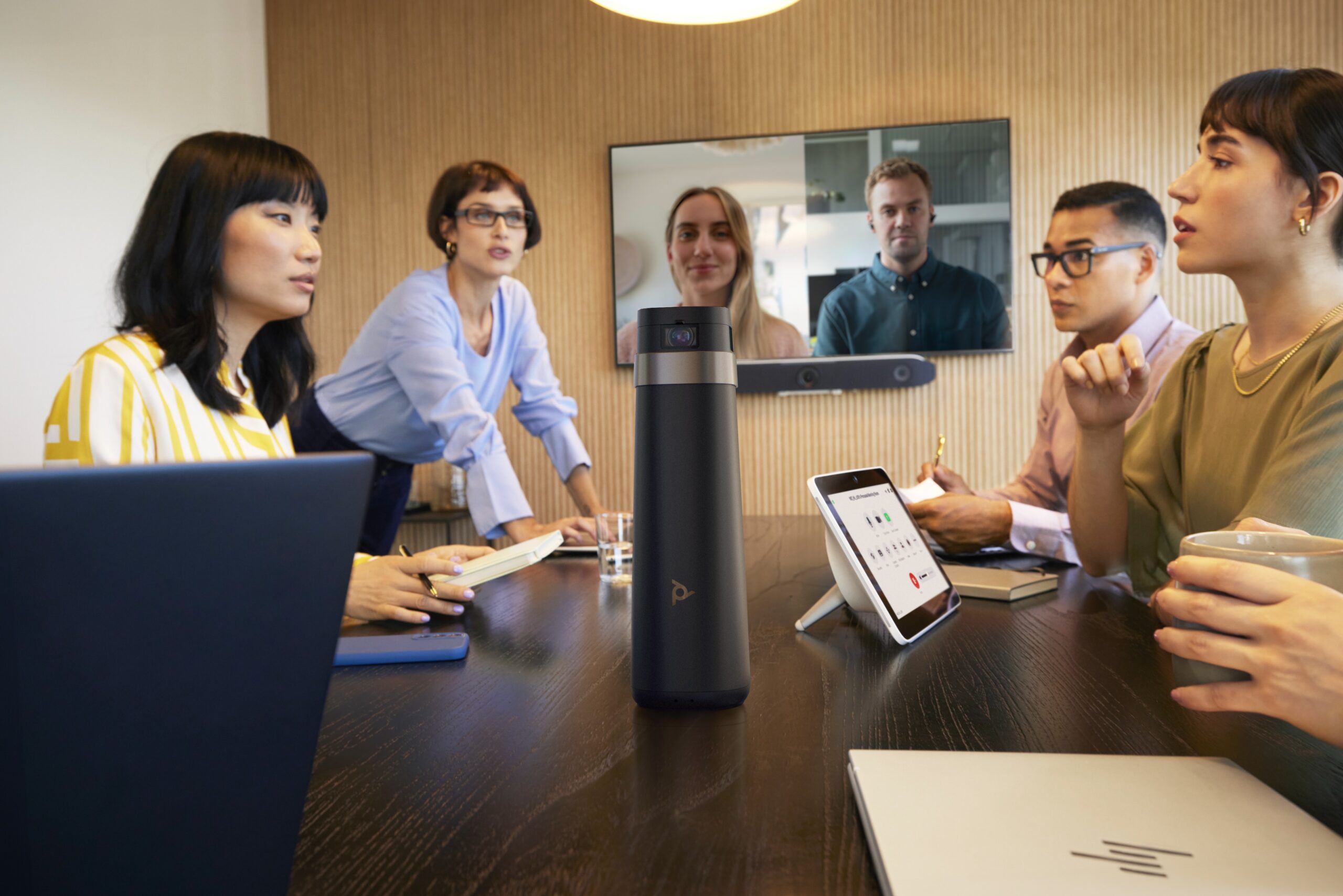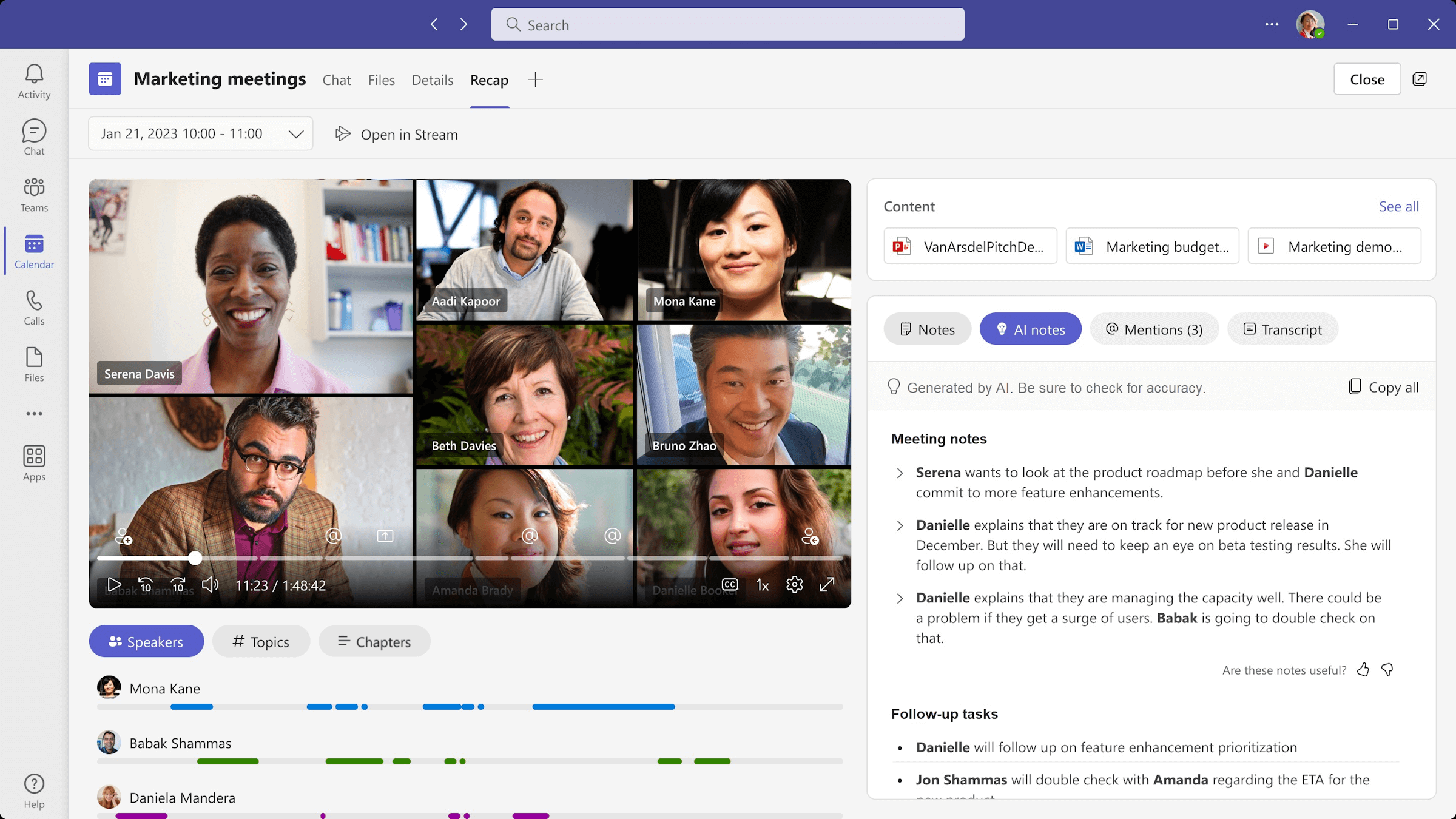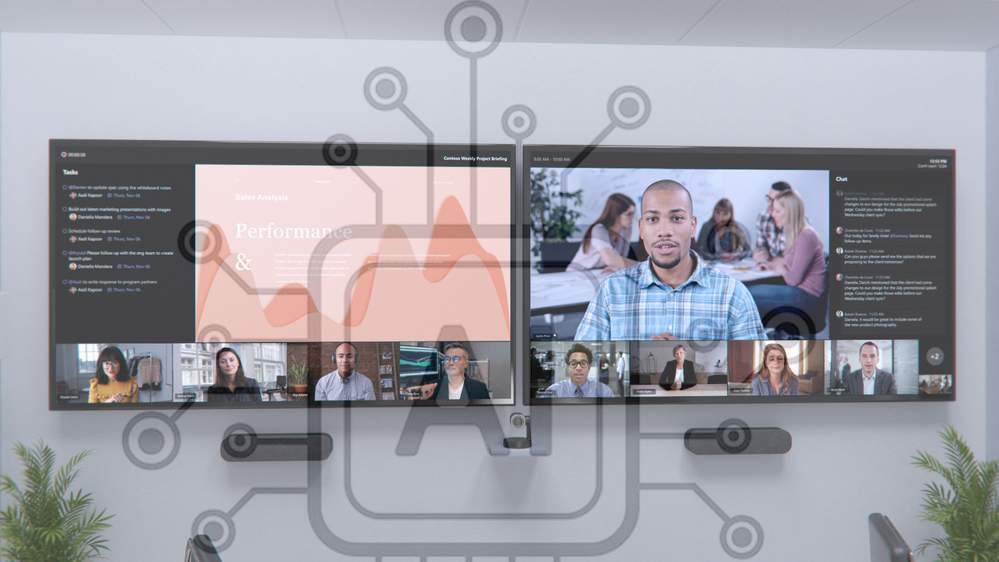In today’s fast-paced and interconnected world, SENSUS understands that effective communication is paramount for businesses to thrive. With the rise of remote work and the increasing need for seamless collaboration across distances, video conferencing has become an indispensable tool for organizations worldwide. However, traditional video conferencing solutions often face challenges such as poor audio quality, distracting background noise, and difficulty in keeping track of discussions. This is where the transformative capabilities of Artificial Intelligence (AI) come into play, revolutionizing video conferencing experiences for boardrooms, huddle spaces, and remote workers alike.
Let’s dive into a few areas where AI is helping us all collaborate better:
AI in Camera and Audio Tracking:
One of the key advancements in video conferencing technology powered by AI is intelligent camera and audio tracking. AI algorithms can analyze video feeds in real-time, automatically adjusting camera angles and zoom levels to focus on active speakers or participants. This ensures that every voice is heard, and every facial expression is captured, enhancing engagement and fostering a more immersive meeting experience. Moreover, AI-driven audio tracking enables the system to pinpoint the source of sound, allowing for seamless transitions between speakers and reducing the risk of missing critical information.

Artificial intelligence works behind the scenes in Poly/HP’s new Studio E360 to deliver the best angle of in-room participants. Working in tandem with a front-of-room camera, the Poly Studio E360 camera gives participants confidence that they are being seen clearly, capturing everyone in the room regardless of where they’re seated. SENSUS was excited to witness the unveiling of the new E360 at Enterprise Connect.
Annotation and Note Taking:
Another exciting application of AI in video conferencing is the integration of annotation and note-taking features. AI-powered tools can automatically transcribe spoken words into text in real-time, providing participants with live captions and facilitating better comprehension, especially for individuals with hearing impairments or language barriers. Furthermore, AI algorithms can analyze meeting content and generate summaries or highlights, making it easier for participants to review key points and action items post-meeting. Additionally, collaborative annotation tools allow users to annotate shared documents or presentations in real-time, fostering greater interactivity and collaboration among participants.

AI for Noise Reduction and Audio Enhancement:
One of the most common challenges in video conferencing is dealing with background noise and audio disturbances, which can hinder communication and productivity. AI technologies offer innovative solutions to tackle this issue by employing advanced noise reduction algorithms and audio enhancement techniques. By leveraging machine learning algorithms, AI can distinguish between speech and background noise, suppressing unwanted sounds while preserving the clarity of human voices. Additionally, AI-driven echo cancellation and acoustic echo suppression algorithms ensure that audio remains crisp and distortion-free, even in challenging acoustic environments. These AI-powered enhancements not only improve the quality of remote meetings but also contribute to reducing fatigue and increasing participant engagement.
Microsoft Leading the Charge in AI:
Microsoft has been at the forefront of integrating AI into video conferencing solutions, particularly through Microsoft Teams rooms. With a focus on enhancing user experiences and enabling seamless collaboration, Microsoft Teams leverages AI to optimize camera framing, identify meeting participants, note taking, and deliver intelligent noise suppression and background blur features. Moreover, Microsoft’s commitment to AI innovation was prominently showcased at events like Enterprise Connect, where AI-driven technologies were a central topic of discussion among industry leaders.
Artificial Intelligence is revolutionizing video conferencing for boardrooms, huddle spaces, and remote workers by enabling intelligent camera and audio tracking, facilitating annotation and note-taking, and enhancing audio quality through noise reduction and audio enhancement techniques. As organizations continue to embrace digital transformation and prioritize remote collaboration, the integration of AI-driven technologies into video conferencing solutions, led by industry pioneers like Microsoft, will play a crucial role in delivering seamless and immersive meeting experiences, ultimately driving productivity and innovation across the globe.



